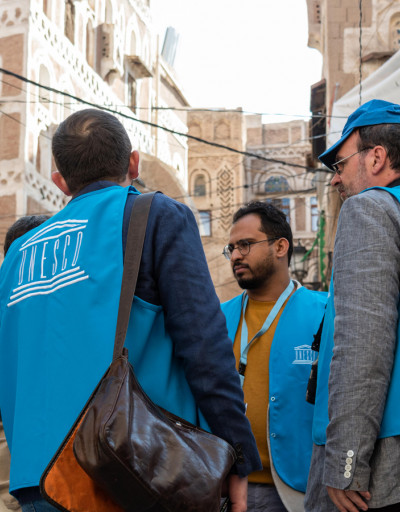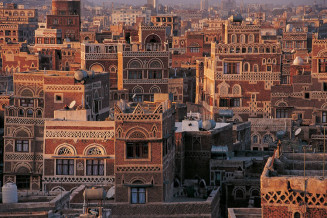Years of turmoil have caused a massive humanitarian crisis in Yemen and taken their toll on precious cultural heritage sites. For UNESCO, the deterioration of Yemeni culture undermines the identity and dignity of its people – and their ability to rebuild for the future. Poverty is widespread. Young people, who make up 70 per cent of the population, are particularly affected; 50 per cent of them are unemployed. Restoring hope and opportunity is vital to the country’s recovery.
Old City of Sana'a
Situated in a mountain valley at an altitude of 2,200 m, Sana’a has been inhabited for more than 2,500 years. In the 7th and 8th centuries the city became a major centre for the propagation of Islam. This religious and political heritage can be seen in the 103 mosques, 14 hammams and over 6,000 houses, all built before the 11th century. Sana’a’s many-storeyed tower-houses built of rammed earth (pisé) add to the beauty of the site.
In partnership with the European Union, UNESCO launched, in 2018, the US$12 million project ‘Cash for Work: Promoting Livelihood Opportunities for Urban Youth in Yemen’. Implemented with the Social Fund for Development (SFD) and specialized local authorities, and focusing on the World Heritage cities of Sana’a, Shibam and Zabid and the city of Aden, this three-year project involves local young people in cash-based urban rehabilitation works on private houses, public spaces and commercial areas, in order to secure adequate and dignified shelter for the inhabitants. Skilled and unskilled young workers under 35 are trained by local master builders. They are gaining skills and daily revenues to cover the essential needs of their families.
More than 40 historic buildings have already been rescued in Sana’a alone. So far 2,500 young people are enrolled with the objective of reaching 4,000, including at least 500 women, by August 2021
In parallel, the project is supporting youth-led cultural programming and services. More than 200 artists and culture operators are engaged in cultural programming activities, including a significant number of young creators from the Yemeni diaspora.









